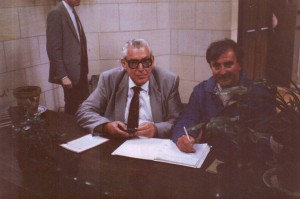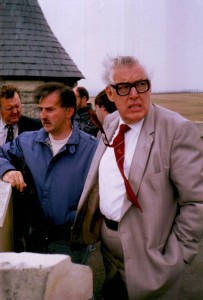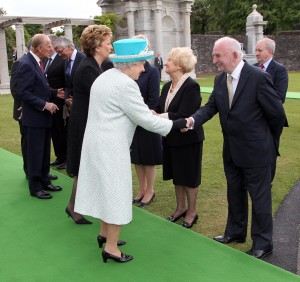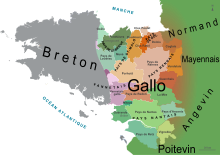William Sloan was born in Newtownards, County Down, in 1897. He was the only son of Anthony and Lizzie Sloan who lived in Roseneath Cottage, Main Street, Conlig, Co Down, near my father’s shop, at the corner of the Tower Road. This leads past Clandeboye Golf Club to Helen’s Tower. The couple were married on 24 August 1896 in Ballygilbert Presbyterian Church. Anthony worked as a general labourer, and his two nieces Martha and Isabella, eventually became my two grannies. Anthony and Lizzie had two children, William and Lillah, to whom my grannies were therefore cousins.
Shortly after the outbreak of the Great War, at the age of 17, William enlisted at Clandeboye without his parent’s permission and, like other young men from Conlig, came home already wearing his uniform. He served with the 11th Battalion Royal Irish Rifles in 108 Brigade of the 36th (Ulster) Division and was killed in action on the first day of the Battle of the Somme, aged then only 19 years. Initially, he was reported missing in action but his mother Lizzie never accepted that he was dead and until the day she died in January 1932, the front door of the cottage was left unlocked, day and night, just in case her son came home. He has no known grave and is commemorated at home in Conlig Presbyterian Church and in France on the Thiepval Memorial Arch to the Missing of the Somme.
But the story does not end there. Following William’s death, Lillah went with two of her cousins, my granny Isabella and her sister, Cecil’s granny, my Aunt Hannah, whose husband Herbie was in the 36th (Ulster) Division until the end of the War, to work on munitions at the Alfred Nobel Dynamite factory at Ardeer in Ayrshire, Scotland. When I was a boy, I used to deliver daily newspapers to Lillah in Roseneath Cottage. We often talked about her brother and she told me that we looked alike and that I reminded her of him – which is perhaps not surprising in view of the family connection. It was from Lillah, my Granny Isabella and Aunt Hannah that I learned most about the Great War. Granny helped inform my views on my identity as a British Unionist, an Irish Royalist and an Ulster Loyalist, as well as my own principles. Always, she instructed, vote for the “Cloth Cap”, the working class.
Only much later, however, did that interest in the war turn into something more active. In 1975 I was contacted by a leading French academic in the study of Ireland, Professor René Frechet, following the publication of my book The Cruthin – the Ancient Kindred (1974). This was the beginning of a long and productive correspondence that lasted until René Frechet’s death in 1992. It is no exaggeration to say that as Professor of English at the Sorbonne, and the spirit behind the University’s Institute of Irish Studies, set up in 1979, he served as guide and councillor to the increasing number of French students engaged in research into Irish themes. His Histoire de l’Irlande (1970) was only one facet of his numerous activities in the field of Irish studies. Professor René Frechet was instrumental in bringing Farset to France, through his friend Denis Dumortier.
Apart from his love of Irish literature – his translation of the poetical works of Yeats (1989) is a model of precision and sensibility – he followed closely events in Northern Ireland which he covered in a series of often outspoken articles published in the French Protestant weekly, Réforme. An acute knowledge of facts as well as an indefectible affection for every aspect of life in the region guided his particular interest in the North. As a young lecturer he had spent two years at Queens’ University Belfast. The experience he acquired, and the long-lasting friendships he made at that time gave him an indisputable authority to comment on developments in the political situation there. There is no doubt that it was through him that the point of view of the Ulster Protestant found its most articulate and sympathetic spokesman in France. His convictions and courageous declarations did much to counter-balance the, often superficial, representations of this community in the mainstream, essentially pro-Republican French press.
I was greatly honoured that René Frechet should take an interest in my work. Commenting on my Identity of Ulster [i], he wrote:
“What an interesting, curious piece of work this is. Generally, if we are told it is not a question of a war of religion in Ulster, we are told about opposition between Catholics, whom people think of as mostly wishing for the unification of the island, and Protestants who want to remain British. Adamson however, does not militate in favour of the bringing together of two quite distinct communities. He says that their division is artificial, that they are all more or less descendants of pre-Celtic peoples, and in particular of the Cruthin, who were constantly moving backwards and forwards between Ulster and Scotland, where they were called Picts, a fact that did not prevent their homeland becoming the most Gaelic part of Ireland. “British”, as far as he is concerned, takes on a meaning that Ulster people tend to forget. Here are some interesting phrases for comparison. “‘Old British’ was displaced in Ireland by Gaelic just as English displaced Gaelic”; “the people of the Shankill Road speak an English which is almost a literal translation of Gaelic”; “the majority of Scottish Gaelic speakers are Protestants.” In fact the author is especially interested in Protestants, but those Protestants who have worked or are working towards reconciliation (could these even be the United Irishmen of the 1790’s?), for a co-operative movement, for a kind of popular autonomy or self-management. He shows the paradoxical confusion of antagonistic, partly mythical traditions, and is trying to convince people of the fundamental unity of Ulster”.
Throughout the 1980s, Fréchet followed my involvement in the creation of several community organisations to promote my ideals of mutual respect, common identity, co-operation and self-help. These included the Farset Youth Project. The idea behind the project was to bring together young people from both sides of the community and allow them to follow in the footsteps of Saint Columbanus from Bangor in the North of Ireland to Reims and Luxeuil in France, through St Gallen in Switzerland, to Bregenz in Austria, and finally on to Bobbio in Italy. In a country where violence was dividing the people, it was important to point to a shared past. This project became possible thanks in no small measure to the help of my friend Tomás Cardinal Ó Fiaich, whose foreword to the second edition of my book, Bangor Light of the World, in 1987 [ii] is testimony to his commitment to the cross-community line we saw as so vital. This book is now in its third edition.
On our way back to Ulster during our first trip to France with Young People from the Shankill and Falls Road areas of Belfast and from Tallaght and Inchicore in Dublin, during the height of The Troubles, I asked the group to make a detour to the Ulster Memorial Tower to explain the part played by Irishmen of all persuasions in the First World War in France, Belgium and the Dardanelles. From what became our Farset Somme Project developed the idea of a Somme Association, which was to be supported by an international organisation, Friends of the Somme. [iii] This Association took root at a press conference held under the auspices of the then Lady Mayoress, Rhonda Paisley, on the 70th Anniversary of the Battle of the Somme, 1 July, 1986, when a Somme Commemoration Committee was initiated.
Having grown up in sight of Helen’s Tower at Clandeboye, where the Belfast Brigade of the 36th (Ulster) Division had trained, and on which the Ulster Memorial Tower at Thiepval had been modelled, I proposed that museum complexes close to both towers could be built, that Thiepval Wood could be purchased and that Helen’s Tower could be opened up to the public under the stewardship of the Dufferin family. Ian Paisley explained his own position as a European MP and emphasised that this was a project to honour everyone who had fought at the Somme, both Unionist and Nationalist, Catholic and Protestant. He helped the project to achieve its aims through the good offices of the European Parliament, the French Embassy and the Commonwealth War Graves Commission.
On Friday 12th September,1986, I brought Dr Ian Paisley, MP, MEP, accompanied by his aide, Nigel Dodds, Fred Proctor and Jackie Hewitt to the Somme Battlefield, where they visited the Ulster Tower at Thiepval, the trench system at the Memorial Park Beaumont-Hamel and the Thiepval Monument. Dr Paisley confirmed he would arrange a meeting with the Commonwealth War Graves Commission about re-opening the Ulster Tower Museum and the provision of oral documentation and photographic displays which Farset Youth and Community Development would help to provide.

 Dr Ian Paisley and myself at the Ulster Tower on 12th September, 1986
Dr Ian Paisley and myself at the Ulster Tower on 12th September, 1986
The Ulster Memorial Tower stands on what was the German front line during the Battle of the Somme, July to November 1916. It is opposite Thiepval Wood from where the 36th (Ulster) Division made its historic charge on the 1st July 1916 and is in close proximity to the village of Thiepval. The Tower stands 70 feet tall and is a lasting tribute to the men of Ulster who gave their lives during the First World War. Its position on the battlefield is a permanent reminder of the 36th (Ulster) Division’s heroic charge at the Battle of the Somme on the opening day of that great offensive. The Ulster Tower was the first official memorial to be erected on the Western Front and was dedicated on 19th November 1921. The Tower itself is a replica of our well known Ulster landmark, Helen’s Tower, which stands on the Dufferin and Ava Estate at Clandeboye, County Down.
Helen’s Tower
When demands grew for the construction of a publicly-funded battlefield memorial at Thiepval in honour of Ulster’s fallen, Sir James Craig proposed, at a meeting held in Belfast’s Old Town Hall on 17th November 1919, that the monument should take the form of a prominent Ulster landmark. The proposal struck a chord and Helen’s Tower seemed the ideal choice.
On Saturday 19th November 1921 the completed Tower was opened by Field Marshal Sir Henry Wilson, Chief of the Imperial General Staff, later to be assassinated by the Irish Republican Army. The principal room inside the Tower is a sixteen feet square memorial chamber, faced throughout in stone, with an inscription tablet in marble. The inscription reads:
This Tower is dedicated to the Glory of God, in grateful memory of the Officers, Non-Commissioned Officers and Men of the 36th (Ulster) Division and of the Sons of Ulster in other Forces who laid down their lives in the Great War, and of all their Comrades-in-Arms, who, by Divine Grace, were spared to testify to their glorious deeds.
The upper portion of the Memorial Tower provides accommodation for a caretaker. By the late 1980s however the Tower had fallen into disrepair and public access was limited. We therefore created a Farset Somme Project early in 1988 and a meeting was called on 21st April that year of all people who had shown an interest in the project, with a view to informing them of the progress to date and hopefully to establish a support group to back us in our future work. It was hoped that by then we would be able to report onwhether the Department of Finance were prepared to meet the cost of modernising the interior of the Tower and whether my proposal to acquire Thiepval Wood had developed any further.
As a result we were able to employ a Supervisor, David Campbell, for our Farset Somme Project, under our General Manager, Jackie Hewitt. At a meeting of Farset on Thursday 8th December,1988, David was able to report that a Press Conference for the Somme Project had been held in the Royal Ulster Rifles Museum, Waring Street, Belfast, under the auspices of Lt-Colonel WRH Charley on Tuesday 21st June, 1988. Rev Dr Ian Paisley and the then Lord Mayor of Belfast Councillor Nigel Dodds had attended, announcing the re-opening of the Ulster Tower at Thiepval. This had been formally performed by the Lord Mayor following a service of Commemoration at the Tower on Friday 1st July,1988. Dr Paisley announced that the Department of Finance had agreed to meet the cost of interior renovations at the Tower, A video presentation and photographic then took place inside the Tower. As Chairman I thanked all those involved in the proceedings including the local representatives from throughout Northern Ireland.
Early in 1988, I published ,under my imprint Pretani Press, After the War came Peace? by my friend Lady Coralie Kinahan of Templepatrick .This was a marvellous historical saga set within the powerful drama of Ireland during and after the Great War. Coralie’s husband, Sir Robin, a former Lord Mayor of Belfast, brought me to Kensington Palace to introduce me to HRH Princess Alice, Duchess of Gloucester. And so, on 1 July, 1989, the Ulster Memorial Tower at Thiepval in France, the second Helen’s Tower, built by public subscription and completed in 1922, was re-dedicated under the auspices of our Farset Somme Project by HRH Princess Alice, Duchess of Gloucester. Hundreds of pilgrims from Ulster made the journey, among them veterans of the 36th (Ulster) Division and public representatives from throughout Northern Ireland.
We were delighted that the Duchess continued to be associated with our work by consenting to become the first President of The Somme Association, which I formally established in 1990. In the autumn of 2004 I was asked by the Royal Household to visit her in her private residence in Kensington Palace. I thanked her for all her work in support of the people of Northern Ireland. I kissed her and she smiled. We were further honoured that her son Prince Richard agreed to follow her in this role following her death in October 2004. He had opened our Somme Heritage Centre at Whitespots, Conlig in 1994. This also contains an exhibition on Nationalist and Republican Ireland, centring on the Easter Rising of 1916, to show both sides of the story as part of our shared history.
As founding Chairman of the Somme Association, I have travelled to France and Belgium every year since its inception to remember the ordinary soldiers from throughout Ireland who fought and died there. Prince Richard has accompanied us many times, officiating at our ceremonies of Remembrance in both France and Gallipoli, and meeting with President Mary McAleese in Turkey. In commemorating the 90th anniversary of the end of the First World War in 2008, I was especially privileged to attend three Services of Remembrance in Belgium and France. The first took place on Sunday 29 June at the memorial at Wytschaete (Belgium) for the 16th (Irish) Division, the Catholic and largely Nationalist division that had fought there alongside the Loyalist 36th (Ulster) Division at the Battle of Messines in June 1917.
Dr Ian and Baroness Eileen Paisley attended this service and Dr Paisley laid a wreath at the grave of Major Willie Redmond at Locre. I had been the first to lay a wreath there on behalf of the Somme Association. On Tuesday 1 July we attended the British and French Service at Thiepval Memorial led by the then Secretary of State, the Right Honourable Sean Woodward. As Chairman of the Somme Association I also officiated at the Ulster Tower Service in memory of the 36th (Ulster) Division and of their comrades in arms who had fought there at the Battle of the Somme. On Sunday 7 September 2008, the Association held a further service of remembrance at the 16th (Irish) Division memorial at Guillemont in honour its members who fought at Guillemont and Ginchy during the Battle of the Somme in September 1916. This service was attended by the Mayor of Derry, and by dignitaries from throughout Northern Ireland.
Helen’s Tower at Clandeboye contains a beautiful room in which are inscribed poems by Lady Helen Dufferin, Lord Alfred Tennyson and Rudyard Kipling, amongst others. Tennyson’s verse reads:
Helen’s Tower here I stand,
Dominant over sea and land.
Son’s love built me, and I hold
Mother’s love in letter’d gold.
Love is in and out of time,
I am mortal stone and lime.
Would my granite girth were strong
As either love, to last as long
I would wear my crown entire
To and thro’ the Doomsday fire,
And be found of angel eyes
In earth’s recurring Paradise.
This poem is replicated in the Ulster Tower at Thiepval, but slightly altered to make it a fitting tribute to the Sons of Ulster and their comrades–in–arms who fought and died in the First World War:
Helen’s Tower here I stand
Dominant over sea and land
Son’s love built me, and I hold
Ulster’s love in letter’d gold.
This suggested to me the importance of literature as a means of understanding the experience of those who fought in the Great War and of paying tribute to them. To this end, I established the Somme Association’s “Battlelines” journal. This regular publication also kept the “Friends of the Somme” and general public informed as to developments within our organisation and included interviews with First World War veterans, biographies of Irish V.C. holders, features on cemeteries and memorials, reprints of prominent newspaper headlines and general historical articles. Amongst the soldier authors so remembered were Tom Kettle, journalist and professor at the National University of Ireland, who died as a Lieutenant with the 9th Battalion Royal Dublin Fusiliers at Ginchy in September 1916, and Francis Ledwidge, who was killed while labouring with a working party in Flanders on 31 July 1917. These two poets were specially remembered at our services in 2008. Captain Lord Dunsany, Ledwidge’s patron and senior officer in the Royal Inniskillngs, wrote at the time: “I gave my opinion that if Ledwidge had lived, this lover of all seasons in which the blackbird sings would have surpassed even Burns, and Ireland would lawfully have claimed, as she may do even yet, the greatest of the peasant singers.”
On Monday 10 September 2007, Dr Paisley, as First Minister of Northern Ireland, and President Mary McAleese, as head of state of the Irish Republic, shook hands for the first time – another symbolic milestone on Ireland’s road to reconciliation – on the occasion of an exhibition held at the Somme Heritage Centre on the role of the 16th (Irish) Division and its largely Catholic and nationalist soldiers in the Battle of the Somme. President McAleese paid tribute both to the event and to the museum, stating that:
“It is an honour to be here at the opening of this exhibition commemorating the Battles of Guillemont and Ginchy, part of the heroic struggle of the Battle of the Somme fought over ninety years ago. Congratulations to Dr Ian Adamson, Carol Walker and all the members of the Somme Association for this labour of love, which allows the stories of those who fought and died to be honoured and respected and better known by a new generation.”
 As Dr Paisley’s Advisor on History and Culture, this gave me the greatest of pleasure. The event also helped pave the way for the visit of Her Majesty The Queen to the National Irish War Memorial at Islandbridge, Dublin, on 18 May 2011, where I felt no less honoured to be presented to her by President McAleese on behalf of our Association. I knew that William, Lillah and Granny Kerr would have been pleased.
As Dr Paisley’s Advisor on History and Culture, this gave me the greatest of pleasure. The event also helped pave the way for the visit of Her Majesty The Queen to the National Irish War Memorial at Islandbridge, Dublin, on 18 May 2011, where I felt no less honoured to be presented to her by President McAleese on behalf of our Association. I knew that William, Lillah and Granny Kerr would have been pleased.
Sources
[i]Ian Adamson, The Identity of Ulster: The Land, the Language and the People (Bangor, 1982); reviewed by René Frechet in Réforme, no. 1811, April 1982.
[ii] Ian Adamson (1987), Bangor, Light of the World (Belfast, 1979).
[iii] See Battle Lines: Journal of the Somme Association, no. 1, 1990.





 As Dr Paisley’s Advisor on History and Culture, this gave me the greatest of pleasure. The event also helped pave the way for the visit of Her Majesty The Queen to the National Irish War Memorial at Islandbridge, Dublin, on 18 May 2011, where I felt no less honoured to be presented to her by President McAleese on behalf of our Association. I knew that William, Lillah and Granny Kerr would have been pleased.
As Dr Paisley’s Advisor on History and Culture, this gave me the greatest of pleasure. The event also helped pave the way for the visit of Her Majesty The Queen to the National Irish War Memorial at Islandbridge, Dublin, on 18 May 2011, where I felt no less honoured to be presented to her by President McAleese on behalf of our Association. I knew that William, Lillah and Granny Kerr would have been pleased.
